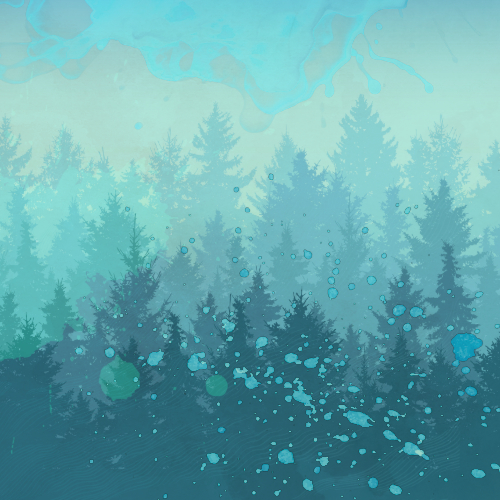Whisper of a dying forest
Short story
by Ananta Kumar Nath
The first time I heard the forest breathe, I thought it was the wind. But standing still among ancient redwoods in Northern California, I realized it was something else entirely. The trees exhaled in long, slow murmurs, a sound stitched together from the rustling of leaves, the creaking of trunks, the hum of insects, and the unseen heartbeat of the earth itself. It was the kind of sound you could only hear if you stopped speaking, thinking, and even listening too hard.
In those days, a decade ago, the world still seemed salvageable. The mornings were misty and cool, the rivers ran strong, and the forests felt invincible. I spent months there, studying plant migration, watching how species shifted slowly upslope, tiny green refugees from the warming lowlands. At the time, it seemed almost natural, a quiet adaptation. We didn’t yet call it what it was: a slow-moving tragedy.
Today, when I return, the breathing has changed.
The river runs thin and lazy; algae blooms where swift water once sang. Some trees stand hollowed out by bark beetles that once froze each winter but now thrive year-round. The forest exhales not with strength but with a weary, labored sigh.
Climate change is no longer a distant threat; it is a living wound on every landscape I have ever loved. As a field ecologist, my job has shifted from documenting the vibrancy of life to chronicling its retreat.
—
There is a patch of land near the Salinas River where I often walk. It’s a place caught between two worlds:
agriculture’s sculpted fields and the untamed remnants of oak savanna. Here, heatwaves roll in harder each year. I notice them not just by the temperature but by how the air changes, how even the insects grow quieter.
One afternoon last summer, as temperatures neared 110°F, I found a jackrabbit lying still under a brittle bush, its sides barely moving. Its fur, the color of dusty silver, blended perfectly with the dying grass. I watched it for a long time, unsure if it was resting or dying.
There’s a strange guilt that comes with watching the natural world suffer. A feeling of helpless complicity. Our ancestors cleared forests, built cities, and lit fires without understanding the consequences. We, their descendants, know better–yet the machine grinds on.
The stories we tell ourselves about nature often carry a kind of arrogance: the idea that ecosystems are resilient, that ‘nature heals.’ And it’s true, to an extent. But resilience has its limits. And we are testing them beyond reason.
—
In Alaska, I saw the permafrost melt.
Whole hillsides slumped and buckled as the ice within them turned to water. Forests tilted drunkenly, trees leaning at impossible angles, their roots no longer anchored in what had once been rock-solid ground. Locals called it “drunken forests,” a phrase offered with a sad, bitter humor.
Everywhere I traveled, the signs multiplied. Coral reefs bleached bone-white. Glaciers wept into rising seas. Birds arrived too early or too late for the insects they relied upon. Monarch butterflies that once clouded the skies in great orange migrations dwindled to lonely handfuls.
And always, the same question pressed against my mind: Can we still turn this around?
The answer is complicated. Some damage is irreversible. Species extinct, glaciers lost, landscapes transformed beyond recognition. But much–so much–remains worth fighting for.
—
Hope, I’ve learned, is not a feeling. It is an action.
I see it in the volunteers who replant mangrove forests, one seedling at a time. In the communities banding together to build rain gardens that catch and filter stormwater. In farmers experimenting with regenerative practices that pull carbon from the air and store it safely in the soil.
I see it in young people who march, who vote, who invent new technologies to clean the air and seas.
The earth does not need us to save it; it will go on, with or without us. What is at stake is our home–the fragile web of life in which we are but one thread. Protecting it is not an act of charity; it is an act of survival.
—
Back in the forest, I sit on the gnarled roots of an old redwood and listen. Despite everything, life persists. New ferns unfurl from blackened soil. Bees hum around fireweed blossoms that sprung up after a blaze. A young oak, improbably, grows from a crack in a charred stump.
The forest breathes, still.
And so must we–not in despair, but in fierce, stubborn love for the only world we’ve ever known. Every action matters. Every degree of warming we prevent, every tree we plant, every policy we fight for. The future is not yet written.
It rustles in the leaves, whispers in the rivers, waits in the wings of the last butterflies. It is calling to us. Asking who we will choose to be.
And whether we will listen.

About the Author
Ananta Kumar Nath (He/him) from Assam, India is a freelance journalist, translator, poet, author of two books on Dr Bhupen Hazarika with special reference to Arunachal Pradesh. His poetry appeared in Gezer Gallery, Glitteraty quill with spark, Words-Empire, and many others. Being a nature lover and a traveler he will left for Japan for research work for his next book project.

